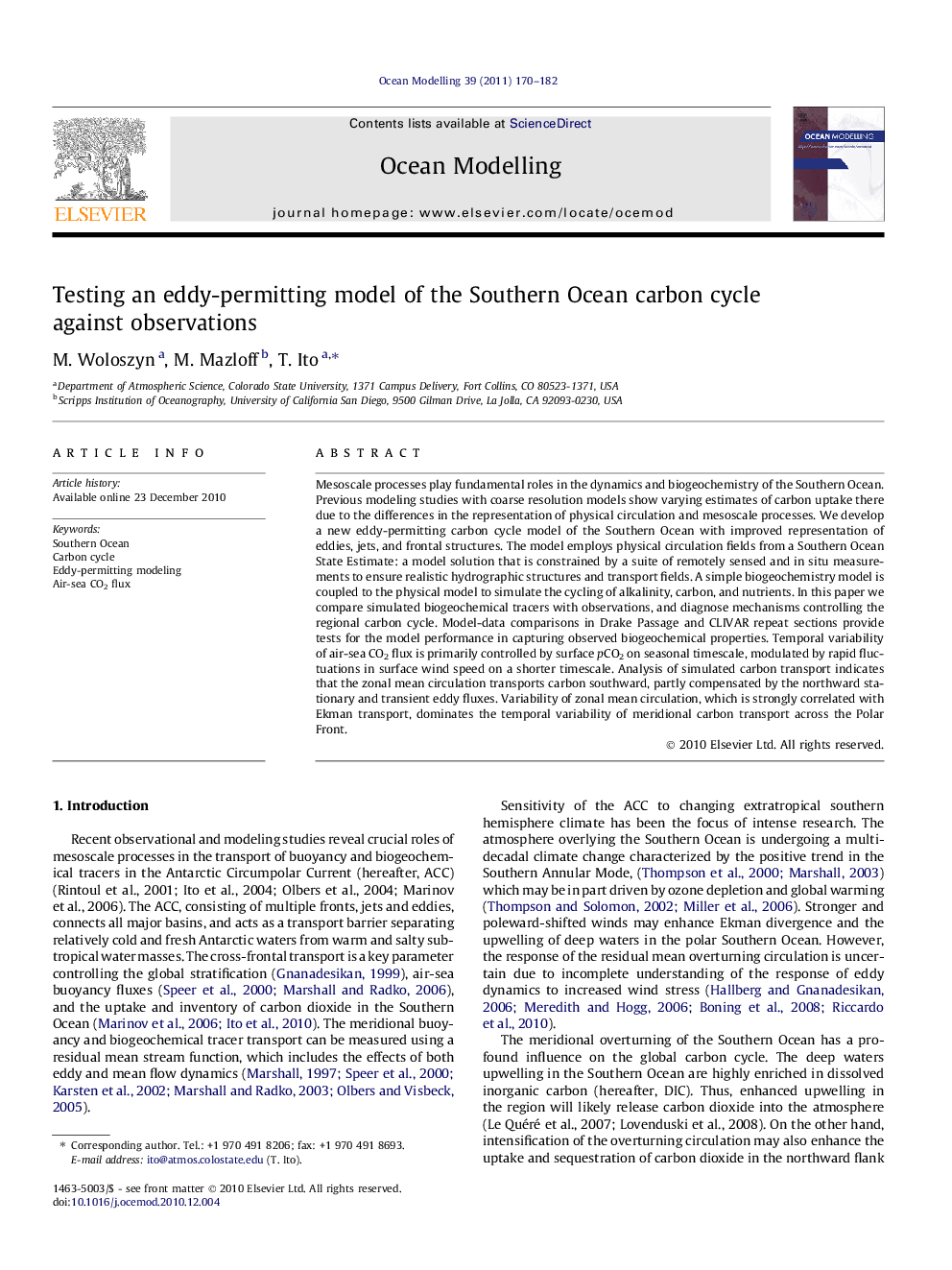| Article ID | Journal | Published Year | Pages | File Type |
|---|---|---|---|---|
| 4552407 | Ocean Modelling | 2011 | 13 Pages |
Mesoscale processes play fundamental roles in the dynamics and biogeochemistry of the Southern Ocean. Previous modeling studies with coarse resolution models show varying estimates of carbon uptake there due to the differences in the representation of physical circulation and mesoscale processes. We develop a new eddy-permitting carbon cycle model of the Southern Ocean with improved representation of eddies, jets, and frontal structures. The model employs physical circulation fields from a Southern Ocean State Estimate: a model solution that is constrained by a suite of remotely sensed and in situ measurements to ensure realistic hydrographic structures and transport fields. A simple biogeochemistry model is coupled to the physical model to simulate the cycling of alkalinity, carbon, and nutrients. In this paper we compare simulated biogeochemical tracers with observations, and diagnose mechanisms controlling the regional carbon cycle. Model-data comparisons in Drake Passage and CLIVAR repeat sections provide tests for the model performance in capturing observed biogeochemical properties. Temporal variability of air-sea CO2 flux is primarily controlled by surface pCO2 on seasonal timescale, modulated by rapid fluctuations in surface wind speed on a shorter timescale. Analysis of simulated carbon transport indicates that the zonal mean circulation transports carbon southward, partly compensated by the northward stationary and transient eddy fluxes. Variability of zonal mean circulation, which is strongly correlated with Ekman transport, dominates the temporal variability of meridional carbon transport across the Polar Front.
